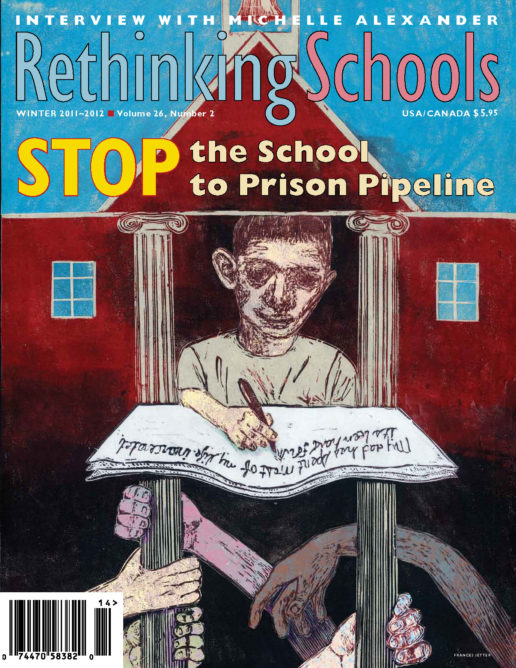Preview of Article:
Teaching Haniyah
Illustrator: Thea Gahr
For our initial activity, I asked students to interview someone—a relative, neighbor, or themselves—about an encounter with the police. I emphasized that it could be any kind of contact, positive or negative. The questions were basic: Where were you and what were you doing when the encounter began? What did the police do and say? What was the result? How did it make you feel?
The next day, I had the students tell their stories in small groups. Then we rotated the groups so each student ended up hearing everyone else’s story. After we returned our desks to a large circle, I asked the students: What did you hear? What does it make you think?
The results were stark. As Valerie, a Filipina student, said: “At least in terms of the cops, there are two realities happening in the same city, one for white kids, one for everyone else.” To be sure, some white students told stories of being hassled for skateboarding or followed in stores, but there were also stories of lost children reunited with their families and of petting police horses in the park. Among the African American, Latina/o, and Muslim students, the stories piled up of being stopped while walking down the street, thrown against walls, and frisked; immigration agents breaking into apartments; visits to older brothers and other relatives in prison. I was stunned by how sharp the differences were. I was also surprised by the level of openness in the room. The students with painful stories were eager to share them, and the other students were interested and supportive.

